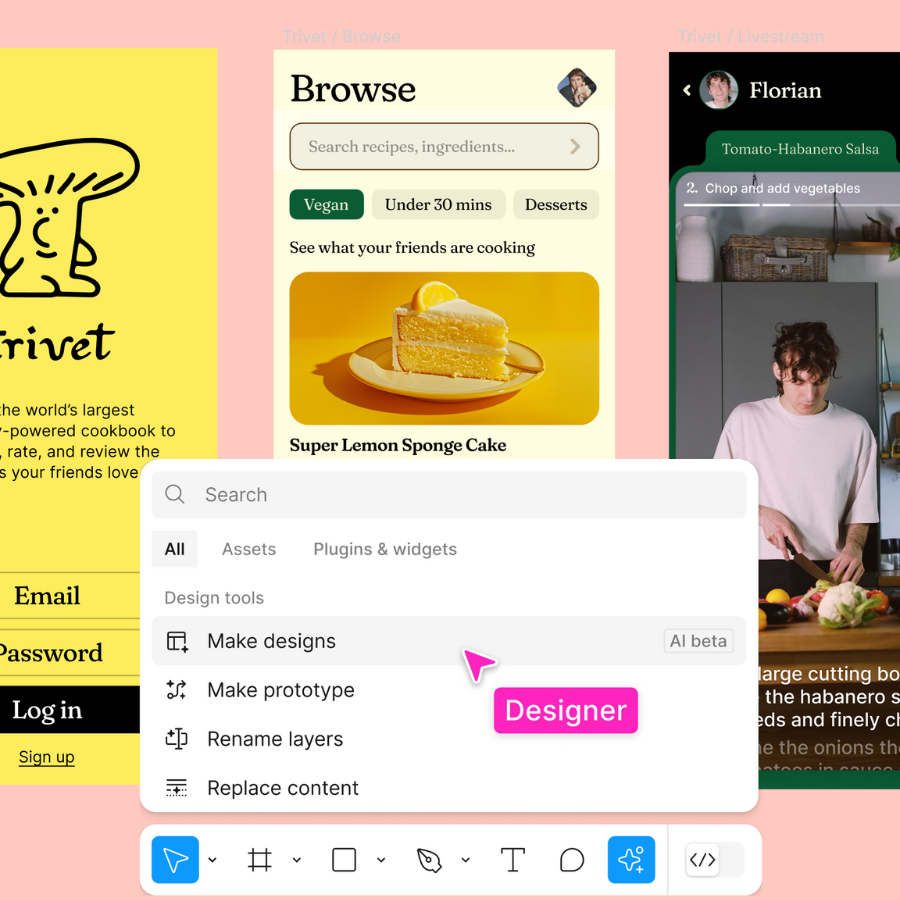In which we discover that artificial intelligence serves rather brilliantly as the perfect gentleman’s personal gentleman for modern product teams
The product development landscape of 2025 bears a striking resemblance to the relationship between Bertie Wooster and his incomparable valet, Jeeves.
Much like how Jeeves possesses that peculiar ability to anticipate needs before they’re fully articulated, AI is transforming product development by optimizing design, automating workflows, reducing costs, and accelerating innovation cycles1.
The parallel isn’t merely whimsical—it’s profoundly accurate.
Consider how modern AI systems now anticipate user needs before they’ve fully formed the thought themselves2, creating interfaces that respond to individual patterns and behaviours with Jeevesian precision.
Rather like having a digital butler who never gets tired, never gets impatient, and always knows precisely what you need before you’ve quite worked it out yourself.
The Gentleman’s Approach to Product Development
What’s particularly fascinating about this transformation is how AI in product development refers to the use of machine learning (ML), natural language processing, computer vision, and other AI tools to assist or automate various stages of the product lifecycle1.
From prototyping to post-launch iterations, AI-driven product development enables companies to minimise risk, accelerate timelines, and create better user experiences—all with the understated efficiency that would make Jeeves proud.
The evidence is rather compelling. 62% of UX designers already use AI to supercharge their workflows2, whilst 87% of developers now use AI-assisted tools in their daily workflows3. It’s not just adoption—it’s evolution.
These professionals aren’t being replaced; they’re being elevated, much like how Jeeves elevated Bertie’s capabilities without diminishing his agency.
AI will evolve from a helpful sidekick to a proactive collaborative pair programming partner4.
It will be handling the mundane tasks (if it’s not doing that already) whilst allowing humans to focus on strategic thinking and creative problem-solving. It’s the perfect embodiment of the Jeevesian ideal: supremely capable assistance that never makes one feel diminished.
The UX Revolution: From Guesswork to Diplomatic Precision
The transformation in UX design processes is particularly remarkable.
Traditionally, UI/UX design has involved a lot of trial and error. Designers would rely on intuition, user feedback, and iterative testing. With AI, however, data becomes a powerful ally5.
AI tools can now analyse vast datasets—user behaviour patterns, heatmaps, session recordings—to provide actionable insights with the kind of diplomatic precision that Jeeves would appreciate.
Uizard is an AI design tool that turns simple text prompts or hand-drawn sketches into responsive UI designs within seconds2.
Meanwhile, Figma’s AI features and Adobe’s Sensei can auto-generate layout suggestions, align elements smartly, and even suggest style improvements based on brand guidelines5.


It’s rather like having Jeeves suggest the perfect outfit—the recommendations are so spot-on that you wonder why you didn’t think of them yourself.
The sophistication extends to AI-driven platforms like Maze or Useberry that can automate testing and deliver insights faster than traditional methods5, helping teams make decisions in real-time. This isn’t just efficiency—it’s the kind of anticipatory service that defines truly excellent assistance.
AI-driven platforms like Maze or Useberry that can automate testing and deliver insights faster than traditional methods.
The Engineering Evolution: Collaborative Intelligence
For software engineers, the transformation is equally profound.
From AI code review to intelligent agents that test, deploy, and maintain software, 2025 shows us a future where AI acts as a reliable, ever-present teammate in the coding process4.
Developers who embrace these tools are writing more code, deploying faster, and delivering better products—all whilst maintaining full creative control.
GitHub Copilot and other AI coding assistants can suggest code snippets, help with syntax, and alert developers to potential bugs as they write6. Tools like GitHub Copilot X now include full project scaffolding, test generation, and documentation writing7.

It’s the perfect example of Jeevesian assistance—handling the repetitive work so that humans can focus on the interesting problems.
The numbers are quite impressive. A McKinsey study found that software developers using AI-based assistants could complete coding tasks 20–50% faster on average8. More importantly, 83% of developers consider implementing AI in their development process essential8, with Gartner predicting that by 2027, half of all enterprise developers will be using AI-powered coding tools8 as part of their daily work.
The Democratisation of Digital Creation

Perhaps the most intriguing aspect of this transformation is how AI is creating a new class of “citizen developers”—domain experts who can now create sophisticated applications without traditional coding expertise.
A citizen developer is a domain expert who understands business needs and has the skills to develop working applications using a low-code application platform1.
Sarah from accounting, who notices that invoice tracking is painfully slow, can now use AI-powered platforms to create automated solutions. She doesn’t need a computer science degree; she needs curiosity and the right AI assistant.
AI algorithms analyse vast datasets, detect patterns, and provide actionable insights, drastically reducing manual work1.
It’s democratisation with dignity—enabling capability without condescension.
Bolt.new is an AI-powered platform that allows you to quickly prototype, run, edit, and deploy full-stack applications directly from your browser9.
Users can simply describe their app requirements, and the AI generates working prototypes—complete with deployment capabilities. It’s rather like asking Jeeves to handle the arrangements for a dinner party; everything simply gets done, properly and efficiently.
The Art of Predictive Assistance
Modern AI’s ability to anticipate needs mirrors Jeeves’s most endearing quality: knowing what you need before you know you need it.
Predictive analytics enables product managers to harness the power of data to make informed decisions, anticipate customer behavior, and drive product innovation10.
AI systems analyze past project performance to predict delivery timelines, highlight risks, and optimize resource allocation7. This predictive capability extends to user experience, where AI can adapt interfaces in real-time based on user behavior data5, creating personalised experiences that feel almost telepathic in their accuracy.
AI will empower design systems to deliver hyper-personalized experiences by leveraging predictive analytics and user behavior data11. Imagine components that adapt in real-time to individual user preferences—it’s the digital equivalent of Jeeves having your preferred breakfast ready before you’ve even thought about being hungry.
The Quality Assurance Revolution
AI’s impact on testing and quality assurance is particularly noteworthy.
AI-driven tools like Test.ai and Applitools can automate testing processes, ensuring a more comprehensive examination of software products12. Test.ai uses machine learning to automate mobile app testing by mimicking human interactions and identifying UI inconsistencies12, whilst Applitools provides visual validation capabilities13.
AI significantly expands and improves automated test coverage by utilizing ML algorithms to analyze vast amounts of data and identify patterns12. Traditional testing methods often struggle with comprehensive coverage, but AI can identify edge cases and potential failure points with the thoroughness that would impress even Jeeves.
The Collaborative Future
What’s emerging isn’t the replacement of human creativity but its augmentation through sophisticated AI collaboration. The human-AI synergy allows developers to combine the creativity of the human mind with the computational power and speed of AI6. This partnership preserves human agency whilst dramatically expanding capability.
ChatPRD serves as a product copilot for your entire team, offering AI-powered features that enhance collaboration, streamline workflows, and ensure secure information sharing14.
These platforms create unified workspaces where ideas flow freely and decisions are made collaboratively, with AI providing intelligent suggestions throughout the process.
The most successful implementations treat AI as what it truly is—a sophisticated assistant that amplifies human capabilities rather than diminishing them.
AI tools adapt and evolve by using machine learning models and deep learning techniques, which leads to more efficient coding practices and project outcomes15.
The Economic Implications
The business case for AI-assisted product development is rather compelling.
By reducing development time by 90%, these platforms can cut development costs by nearly half1, with companies witnessing a 58% revenue increase from implementing AI tools1.
The global AI code tools market is projected to surpass $25 billion by 20301, driven by the fundamental shift toward more accessible, efficient development processes. 80% of business and IT leaders believe that AI can not only boost productivity but also create new job opportunities16, making it a valuable asset throughout the product development journey.
The global AI code tools market is projected to surpass $25 billion by 2030.
80% of business and IT leaders believe that AI can not only boost productivity but also create new job opportunities.
The Challenges and Considerations
Of course, implementing AI assistance isn’t without its challenges. Much like managing any capable assistant, the key lies in proper training, clear communication, and maintaining appropriate oversight. 53% of organizations currently have no immediate plans to integrate AI into their design systems11, often due to concerns around privacy, lack of expertise, and budget constraints.
53% of organizations currently have no immediate plans to integrate AI into their design systems.
However, documentation generation (63%) and workflow automation (71%) top the list of anticipated use cases11, suggesting that teams recognise AI’s potential for handling the kind of routine tasks that Jeeves handled so effortlessly.
Looking Forward: The Jeevesian Paradigm
As we move toward a future where software development — using abstracted tools (not code) and supported by AI — will become a normal skill of business workers17, the Jeeves model becomes increasingly relevant.
The most successful AI implementations will be those that master the art of sophisticated assistance—being indispensable without being intrusive, competent without being condescending.
In 2025, artificial intelligence will no longer be a complementary tool but a core driver of product management strategy and execution18.
Product managers must adapt to remain relevant as businesses depend increasingly on AI to optimise processes, analyse large datasets, and customise user experiences at scale.
The future belongs to teams that understand how to work with AI assistants that possess genuine sophistication—systems that can handle complex tasks with diplomatic finesse whilst preserving human creativity and strategic thinking. Rather like having one’s own digital Jeeves, really.
The Gentleman’s Conclusion
The transformation of product development through AI represents more than technological evolution—it’s the emergence of truly sophisticated assistance that enhances human capability whilst preserving human dignity. Much like Jeeves made Bertie more capable without making him feel diminished, the best AI systems enhance professional potential whilst maintaining the qualities that make us distinctly human.
As Jeeves himself might observe with characteristic understatement: “There is no time, sir, at which proper assistance does not matter”17.
In the realm of product development, that assistance has arrived—polite, capable, and refreshingly civilised.
The revolution will indeed be conversational, but it will be a conversation between equals: one party with infinite patience and computational power, the other with creativity, judgment, and that ineffable quality that makes us human. Rather like the perfect digital valet, wouldn’t you say?
Footnotes
17 https://dorik.com/ai-website-builder
1 https://www.debutinfotech.com/blog/future-of-ai-in-product-development
18 https://eicta.iitk.ac.in/knowledge-hub/product-management/why-ai-will-define-product-management/
2 https://procreator.design/blog/ai-tools-to-speed-up-ux-design-workflow/
15 https://www.ibm.com/think/topics/ai-in-software-development
16 https://sunbytes.io/blog/product-development-process-in-the-ai-era/
5 https://www.linkedin.com/pulse/how-ai-transforming-uiux-design-workflows-asma-sattar-49kpf
6 https://moringaschool.com/blog/how-ai-is-changing-software-engineering-opportunities-and-challenges/
4 https://www.gocodeo.com/post/how-ai-is-transforming-software-development-in-2025
7 https://kenfra.in/future-of-ai-powered-software-development-in-2025/
8 https://www.linkedin.com/pulse/how-ai-transforming-software-engineering-2025-tools-trends-yash-jain-cbb8f
3 https://emmo.net.co/articles/post/the-complete-guide-to-ai-in-software-development-transforming-code-creation-in-2025.html
11 https://www.supernova.io/blog/the-future-of-ai-assisted-design-systems-predictions-and-use-cases
12 https://www.bairesdev.com/blog/ai-product-dev-coding-testing-launch/
10 https://productmanagement.world/Product+Analytics/Predictive+Analytics
13 https://shiftasia.com/column/ai-driven-software-testing-top-tools-for-automated-testing/
9 https://www.synthesia.io/post/ai-tools
14 https://www.chatprd.ai/product/features/collaborate-with-team
- https://www.debutinfotech.com/blog/future-of-ai-in-product-development
- https://procreator.design/blog/ai-tools-to-speed-up-ux-design-workflow/
- https://emmo.net.co/articles/post/the-complete-guide-to-ai-in-software-development-transforming-code-creation-in-2025.html
- https://www.gocodeo.com/post/how-ai-is-transforming-software-development-in-2025
- https://www.linkedin.com/pulse/how-ai-transforming-uiux-design-workflows-asma-sattar-49kpf
- https://moringaschool.com/blog/how-ai-is-changing-software-engineering-opportunities-and-challenges/
- https://kenfra.in/future-of-ai-powered-software-development-in-2025/
- https://www.linkedin.com/pulse/how-ai-transforming-software-engineering-2025-tools-trends-yash-jain-cbb8f
- https://www.synthesia.io/post/ai-tools
- https://productmanagement.world/Product+Analytics/Predictive+Analytics
- https://www.supernova.io/blog/the-future-of-ai-assisted-design-systems-predictions-and-use-cases
- https://www.bairesdev.com/blog/ai-product-dev-coding-testing-launch/
- https://shiftasia.com/column/ai-driven-software-testing-top-tools-for-automated-testing/
- https://www.chatprd.ai/product/features/collaborate-with-team
- https://www.ibm.com/think/topics/ai-in-software-development
- https://sunbytes.io/blog/product-development-process-in-the-ai-era/
- https://ppl-ai-file-upload.s3.amazonaws.com/web/direct-files/attachments/10660488/4c6619fd-3029-4050-a8a7-6d4720aa5281/The-Revolution-Will-Be-Conversational.docx
- https://eicta.iitk.ac.in/knowledge-hub/product-management/why-ai-will-define-product-management/
- https://www.tuvoc.com/blog/how-ai-is-transforming-product-development-in-2025/
- https://docs.aws.amazon.com/wellarchitected/latest/machine-learning-lens/well-architected-machine-learning-lifecycle.html
- https://www.linkedin.com/pulse/understanding-generative-ai-its-use-cases-ux-design-mayur-utf1f
- https://www.gocodeo.com/post/best-workflow-management-software-for-developers-in-2025-ai-driven-fast-and-flexible
- https://encord.com/blog/machine-learning-lifecycle/
- https://wearebrain.com/blog/the-future-of-design-systems/
- https://blog.bitsrc.io/building-design-systems-with-ai-in-2025-57a23b9c318b
- https://www.launchnotes.com/glossary/predictive-analytics-in-product-management-and-operations
- https://webflow.com/blog/prototyping-tools
- https://www.uxdesigninstitute.com/blog/best-prototyping-tools-for-ux-designers/
- https://www.deepchecks.com/question/how-do-youcreate-feedback-loops-for-machine-learning-models/
- https://www.uxpin.com/studio/blog/ai-tools-for-designers/
- https://c3.ai/glossary/features/feedback-loop/
- https://sjinnovation.com/collaborative-ai-guide-future-teamwork-and-productivity
- https://embarkingonvoyage.com/blog/how-ai-is-revolutionizing-product-development-in-2025/
- https://lumenalta.com/insights/a-guide-to-ai-product-development
- https://www.bitcot.com/how-ai-tools-are-rewriting-development-workflows/
- https://lollypop.design/blog/2024/september/generative-ai-ui-ux-design/
- https://www.designsystemscollective.com/role-of-ai-in-design-systems-e6c9afbc1efd
- https://zeroheight.com/how-we-document/design-system-report-2025-brought-to-you-by-zeroheight/
- https://www.nngroup.com/articles/ai-design-tools-update-2/
- https://zapier.com/blog/generative-ai-tools/
- https://www.lennysnewsletter.com/p/a-guide-to-ai-prototyping-for-product
